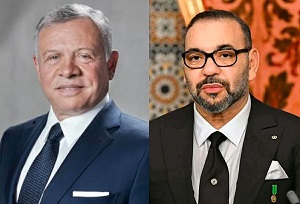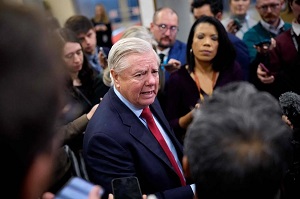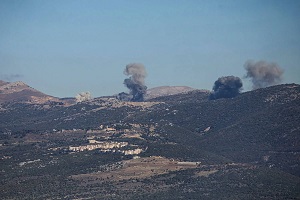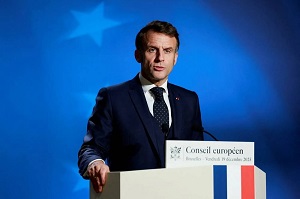Difference between Iraq’s Sahwat and Popular Mobilization militias - By Abdulrahman al-Rashed, Asharq Al-Awsat
International organizations’ warnings of the Popular Mobilization militias have brought the latter into the picture again depicting it as a dangerous organization.
There is also a distortion campaign that aims to mislead the world about the Popular Mobilization militias’ legitimacy by comparing it with other groups, such as the Sahwat and Peshmerga.
During the last few years the Americans spent in Iraq, the military command formed a group of Sunni tribes consisting of Anbar citizens.
The aim was to get rid of the terrorist al-Qaeda organization after the Americans failed. At the time, CIA officials were quoted in the New York Times as saying that Anbar was a hopeless situation as the situation in west of Iraq has completely gone out of control. A force called ‘Sahwat’ was formed and it was ridiculed considering that all people in the governorate were suspects and that al-Qaeda - particularly the most dangerous branch which Abu Musab al-Zarqawi formed and which we call ISIS today - has reached the peak of its influence. This al-Qaeda branch killed the Sahwat leader and fierce battles erupted and ended two years later after eliminating the terrorists.
Back then, Nouri al-Maliki’s government objected to forming a sectarian tribal power because the Sahwat were Sunni and they feared they will turn into an armed force that opposes the central authority.
Disbanded
In the end, the Sahwat were disbanded by suspending financial appropriations and integrating a small number of them within the armed forces.
Theoretically, worry of a parallel force was justified in a country that was still suffering from a disturbed situation. However, on ground, the tribal Sahwat were eliminated and were not replaced by an armed governmental force to protect the west of Iraq. The result was that al-Qaeda returned and it controlled several areas, displaced thousands and murdered many.
Maliki’s failure to compensate for the Sahwat brought back the cancer of terrorist groups which besieged Baghdad’s surroundings and seized Mosul, Baiji and other areas. This is a summary of the Sahwat.
Other parallel force
The other parallel force is the Peshmerga, an armed Kurdish force which operates in its areas following a consensus, with the state not deploying its armed forces there. As long as the Kurds have their special status in a semi-autonomous region, the Peshmerga will continue to protect its areas.
The story of the Popular Mobilization militias is different than that of the Sahwat and Peshmerga. They were composed of a group of Shiite sectarian militias that existed before and enjoys the support of the authority as a part of quotas among rival Shiite religious powers.
After Mosul fell into ISIS’ control and military commands fled the city, Iran intervened “to help” and directed influential political forces to weaken the system of governance which the Americans established. This includes weakening the army which they considered as part of the remains of Saddam Hussein’s regime. However, this is not true because ever since the fall of Saddam Hussein and after the army was disbanded in 2003, thousands of armed forces’ personnel were killed or expelled.
However, Iran and sectarian leaders desire to establish a sectarian military power that’s parallel to the army and that follows them. It wants the state to bear the costs of arming this power and paying its forces’ wages. The idea is similar to what Ayatollah Khomeini’s followers did after the revolution against the Shah as they established the Revolutionary Guards to enable themselves in power and eliminate the other Iranian groups which were also part of the revolution.
The Popular Mobilization is a huge militia that formally follows the state. However, we will see later how it will crystallize to enable one Shiite party in governance and marginalize other Shiite and Iraqi groups.
Iran will thus dominate over the political group that controls the Popular Mobilization militias.
The difference between the Sunni Sahwat and the Popular Mobilization militias is that the former was established to fight Sunni extremists in Sunni areas while the latter is a Shiite militia that is being exploited to govern Iraq in general.
The Sahwat was disbanded and they are no more while the Popular Mobilization militias are still expanding and its work has not been limited to liberating Mosul or pursuing ISIS.
Although Iraqi authorities tried to assure those who oppose and suspect the Popular Mobilization militias by adding a few Sunni units to them, the Popular Mobilization militias is still mostly a dangerous and sectarian project that serves as a weapon for Iran to threaten all of the Iraqis.
Saving Iraq
The last question is: Is it possible to save Iraq from all these dangerous changes?
As long as the elected central authority is weak and as long as Iran is gradually taking over Iraqi institutions, it will not be easy to end this Popular Mobilization project as it’s similar to Hezbollah’s militia in Lebanon. Hezbollah has practically controlled Lebanon without having to cancel the institutions of political governance as it has weakened the presidency, the cabinet and parliament and made them incapable of governance.
The solution to stop sabotaging the state is primarily in the hands of the Iraqis.
Then there’s the role of international organizations which must be urged to hold them accountable on the international level as it must besiege them by prohibiting arming them and blacklisting their leaders.
The US must be held accountable and must be urged to intervene to correct the situation.
All the Iraqis will lose their modern state - which thousands have died for - if they do not stand against establishing militias and against sectarian blocs and Iran’s domination over the government.




